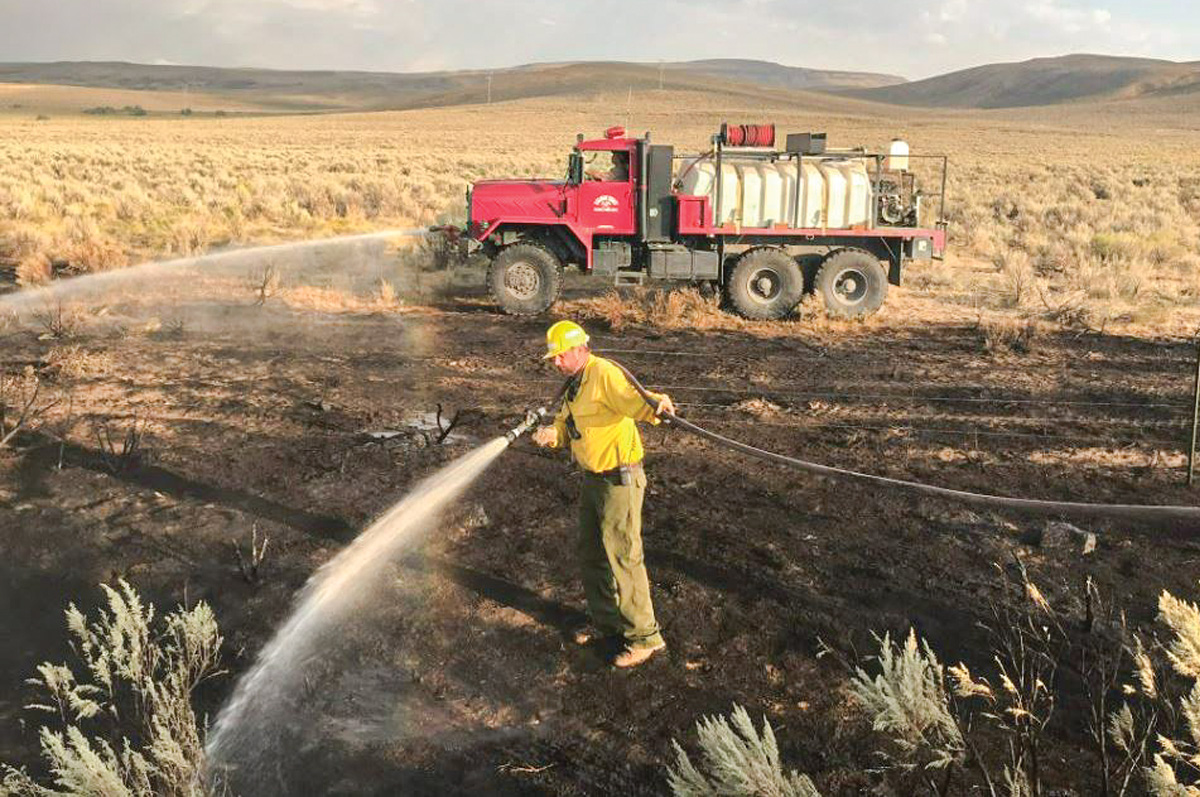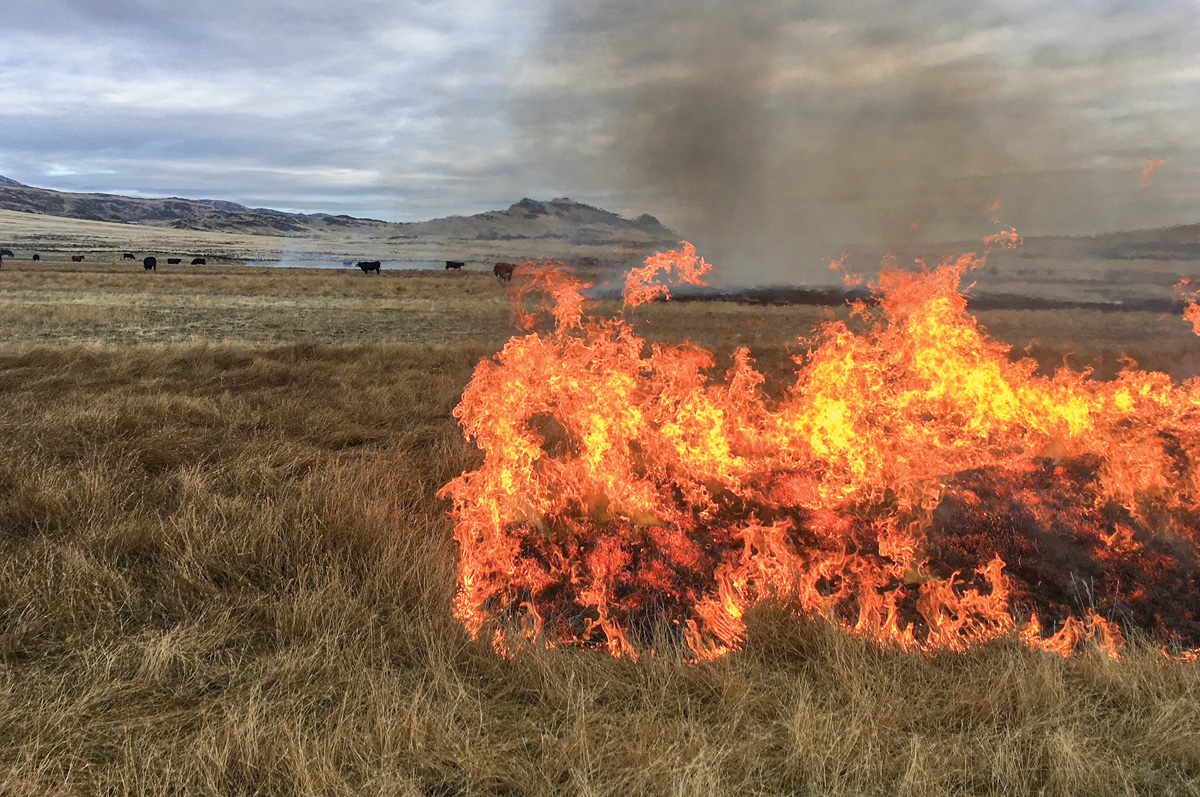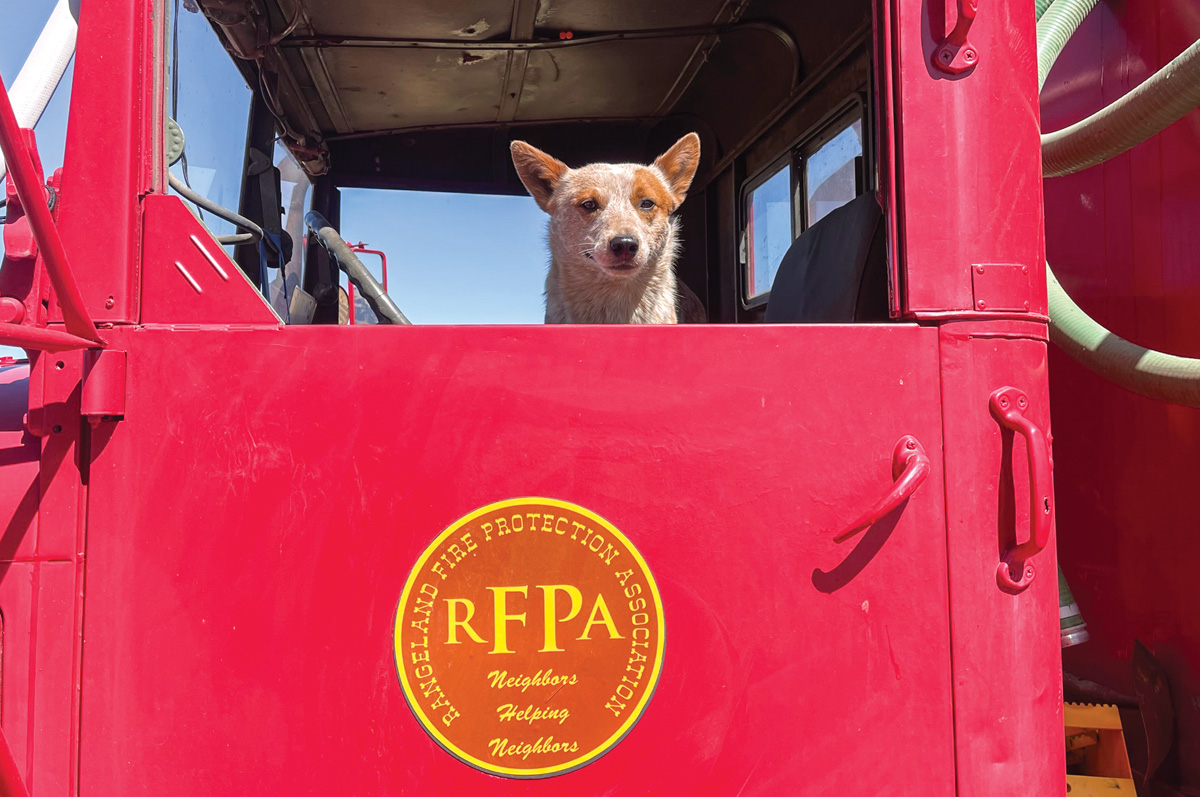The first line of fire defense in many rural areas are Rangeland Fire Protection Associations (RFPAs). These groups of volunteers, mainly farmers and ranchers, are trained and authorized to respond to fires and help protect 9 million acres of Idaho lands.
Idaho’s 10 RFPAs collectively respond to about 330 fires each year. Rick Finis, South Idaho fire program liaison for the Idaho Department of Lands (IDL), notes that the first RFPA in Idaho was established near Mountain Home in 2012, with legal recognition from the Legislature in 2013. This legal status enables RFPAs to form agreements with the state, register with the Secretary of State’s office and obtain nonprofit status with a 501(c)(3) designation from the IRS. Idaho’s RFPA system is modeled after Oregon's program (with 28 associations), dating back to the 1960s.
In addition to providing guidance in forming an RFPA, IDL provides personal protective equipment (PPE) the members are required to have. “We usually provide that for the first five years as they get new members and grow. That includes the hard hat, fire-resistant clothing, fire line pack, fire shelter and other pieces of equipment. When possible, we also supply radios,” Finis says.
“To make sure there is funding for new RFPAs, the Governor’s Office of Species Conservation also helps. They get money from the Idaho Legislature, mainly for sage grouse projects. Fire is one of the greatest dangers for sage grouse, so if we have RFPAs protecting habitat, that’s a win-win.”

Volunteer Todd Lanting puts out a fire near Hollister. Courtesy photo.
Challenges and cooperation
In the past, ranchers often worked alongside agency firefighters, but a tragic event during the Point Fire of 1995, where two firefighters from a rural fire district in Kuna lost their lives, resulted in a legal dispute holding the Bureau of Land Management (BLM) partially accountable. Consequently, federal agencies restricted untrained individuals from firefighting due to liability concerns. The RFPA model, however, requires ranchers to take training from the BLM and Forest Service, fostering a cooperative spirit. RFPA members must complete the same training as agency personnel to receive their red cards, with a refresher course each year.
This year, 314 RFPA members have red cards, with over 700 trained since the program began. Finis says volunteer turnover is common, as some ranch workers go from one place to another and move to areas without an RFPA.
In south-central Idaho, the Three Creek RFPA is adjacent to the Saylor Creek, Shoshone Basin and Notch Butte RFPAs. They all train together at the Twin Falls BLM district but hold separate annual refresher courses, assisting each other regardless of boundaries.
The Shoshone Basin RFPA, on the southern Idaho and northern Nevada border, covers 488,000 acres of private, BLM and Forest Service lands. Chairman Lori Satterwhite-Turner says they are one of the smaller RFPAs. They partner with the Salmon Tract Fire Station in Hollister, Idaho, sharing fire engines through a memorandum of understanding. Established in 2015, the Shoshone Basin RFPA maintains a strong relationship with federal partners who rely on the ranchers' knowledge of the land.
The Shoshone Basin RFPA has 20 trained members and 34 members total. “Some don’t fight fires but pay dues. They have an interest because they have cattle on various allotments,” Satterwhite-Turner says. Due to the difficult topography, they don't have tractors with discs. However, they have received fire engines through grants, which she secured by applying to the BLM, Forest Service and IDL.
Mike Guerry, a rancher in southern Idaho and chairman of the Three Creek RFPA, says, “The Saylor Creek RFPA is our sister RFPA; together we cover the Jarbidge Resource Area of the BLM. Fire doesn’t respect boundaries, so we work together a lot.”

Volunteer ranchers and farmers have a vested interest in keeping wildfires off their property. Courtesy photo.
The Owyhee RFPA started in the early 2000s after major wildfires. Guerry recalls, “When I was growing up, a 3,000-acre fire was big. By the 2000s, a small fire was 150,000 acres, and a large fire was 700,000, like the Murphy Complex Fire.” Prescriptive grazing left too much fuel, and small fires became large because firefighters were not allowed to do enough, quickly enough.
When their RFPA was formed, there were concerns on both sides. “Some BLM firefighters thought they’d have to babysit inexperienced ranchers. The ranchers were apprehensive, thinking the BLM didn’t really want to put the fires out. We soon found there was no accuracy in either concern. The partnership is what has made it work,” says Guerry. The RFPA now has a good relationship with BLM firefighters.
RFPA impact
Charlie Lyons, rancher and chairman of the Mountain Home RFPA, explains that their partnership with the BLM and Forest Service began with frustration but improved over time. “We were the first RFPA established in Idaho because we’d had terrible fires. We went from fires that averaged about 7,000 acres to over 100,000 acres every year,” Lyons says.
In 2000, Lyons’ ranch experienced a complete burnover that destroyed everything but their main buildings and houses. Attributed to a combination of poor decisions and strong 40-mph winds, their winter range, pump house and haystacks all burned in a few hours. “Now we have a fire plan, create fuel breaks and [have] more preparation – and all of us are trained,” he says.
Most of the RFPAs were started after a large fire in their area; people realize they don’t want that to ever happen again. “Our RFPA is set up a little differently than some of the others. To be a member, you must be a rancher with an agency permit – with livestock on public land. We were the guys showing up on the fires anyway because our permits were burning,” Lyons says.
In 2013, during the Pony and Elk Complex fires, Lyons again suffered substantial losses – 90% of his upper country and 50% of his cows. “If it hadn’t been for the RFPA and that connection, we would have lost it all,” says Lyons.
David Rafferty is chairman of the Henry’s Creek RFPA and a communications officer. “Our members are almost all farmers, ranchers or landowners. As a landowner, I have a vested interest in keeping wildfires from burning us out.”

Rangeland Fire Protection Associations (RFPAs) receive funding for equipment through grants, donations and member dues. Courtesy photo.
Most of their equipment, including three trucks from the military, was donated by the federal government. The State of Idaho covers transportation costs and redistributes military vehicles to rural firefighting units. Rafferty says they communicate their equipment needs to the military, which procures and channels the equipment through the state to their RFPA.
The Henry’s Creek Fire in 2016 burned more than 52,000 acres and resulted in formation of this RFPA. When the fire started, no one knew who was supposed to fight it. It was outside any fire protection district, leaving no agency in charge or insured to combat it.
“This fire burned from the foothills east of Idaho Falls and Ammon and headed toward Swan Valley. It hit a lot of ranchers and farmers,” he says.
Now, with their RFPA, trained farmer-firefighters can start disking fire lines faster than tanker trucks or airplanes can be deployed. “Most of the fires we’ve fought have been smaller fires – and we were on them quickly because one of our members spotted smoke and we put it out,” he says.
On May 18, their group had a training day to go over some of the equipment recently received. “We had representation from BLM, IDL and a big presentation from Farm Bureau. [The Farm Bureau] is assisting all RFPAs in Idaho. They are supplying our insurance needs, plus they gave our RFPA a check for 4,500 dollars,” Rafferty says.
There are still many areas in Idaho that do not have an RFPA. Those interested in forming one can consult with Rick Finis from IDL, who provides guidance on the necessary steps. Recently, he met with people at Fort Hall who want to start one. The newest RFPA in Idaho is Weiser River, near Cambridge, established after a large fire in that area.




.jpg?t=1687979285&width=640)



